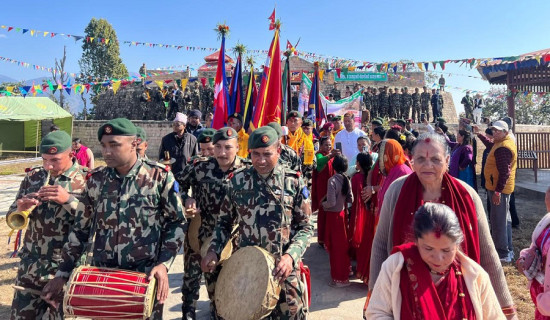- Thursday, 8 January 2026
Water Security Emerging As Burning Issue
Water security has emerged as a pressing issue amid rapid urbanisation, climate change and unsustainable practice of resource use. The Global Water Security 2023 Assessment Report of the United Nations states that 3 out of 4 people live in water-insecure countries.
Similarly, the same report paints a dire condition of more people losing their lives due to lack of safe drinking water, sanitation and hygiene compared to water-related disasters. Although the problem seems to be due to unavailability of water, its root lies in the uneven socio-economic, political and cultural processes and systems of interactions. Growing disparities leading to water resources at the hands of privileged few leaving the marginalised people is a testament to this.
The notion of water security in recent times transcends beyond the bio-physical facets of water encompassing the socio-political and cultural dimensions. At the heart of the recent movements around water is the agenda of justice that seeks to analyse how the uneven ecological exchange and social injustices continue to exacerbate the vulnerabilities of the poor despite their insignificant contribution to the increasing environmental problems.
Notion of CEJ
Against this backdrop, water justice and equity issues have garnered unprecedented attention of scholars, practitioners, and activists of late. Theorised under the name of Critical Environmental Justice (CEJ), the concept of water security focuses on interlocking issues of gender, race and environmental injustice rooted in discriminatory socio-political and economic structures. Deeply embedded in this is the notion of intersectionality which refers to an approach for thinking how multiple axes of marginality shape people’s identities and lived experiences. While the traditional paradigms considered water security as a purely technical problem, emerging paradigms stress upon increasing community and stakeholder participation, effective governance, and multidisciplinary approach to coping with water security.
Growing body of research on water security in Nepal’s Himalayan towns shows that water security is an outcome of the interplay of multiple factors including gender, ethnicity, class, spatial locations, inclusive of core, levels of income, participation in decision-making, and power relations. While Nepal’s varied topography has some definite impact on water availability and distribution for which technical solutions are possible, the prominence of socio-political factors like control over resources, affiliations in public institutions and nexus with political authorities in determining water security has been well-documented.
This author’s own experience of research in Dhulikhel, one of the mid-hill towns of Nepal also corroborates with these findings. One of the major observations has been the discrimination between the rural and the urban wards in Dhulikhel in terms of water access and resources. The representation of the rural communities in drinking water user groups is limited and their voices never become an agenda of deliberation and substantive discussion. On top of these issues, the remote geographical access continues to add woes to their already existing problems.
Furthermore, the discrepancies exist on the basis of caste/ethnicity, gender and class. Hence, the interplay of multiple factors tends to put the marginalised people in peril compared to those with improved access to decision-making processes and better geographical locations.
Nepal’s environmental justice movement has been characterised by the growing demand for community rights with control over resources which manifested in movements of various community federations and organizations demanding grassroots control over water, forest and land in recent decades.
One of the outstanding features of Nepal’s recent environmental justice movement is the growing collective and organised youth movements towards climate justice and the protection of indigenous culture and tradition. Be it the case of taking to the street demanding fair compensation to the local communities in the construction of the Nijgadh international airport or marches and demonstrations calling for climate justice motivated by the global Fridays for Future campaign, both these incidents condemned the structural injustices and championed for the welfare of the marginalised groups.
Integrated approach
Rather than addressing one particular dimension of inequality, it is important to take an intersectional and integrated approach to unfolding and addressing the nuanced interactions of different identities, sociopolitical practices and the decisions and development in the field of water security as these (re)shape the experiences of water access and control. Integration of the environmental justice concerns into development plans would pave the way for fostering nexus among water security institutions and various communities affected by them. It is urgent to deepen the discourses and deliberations on CEJ directed towards addressing systemic inequalities and injustices prevalent in the water supply putting ‘people before profit’
(The author is an independent researcher and science communicator based in Nepal.)
















